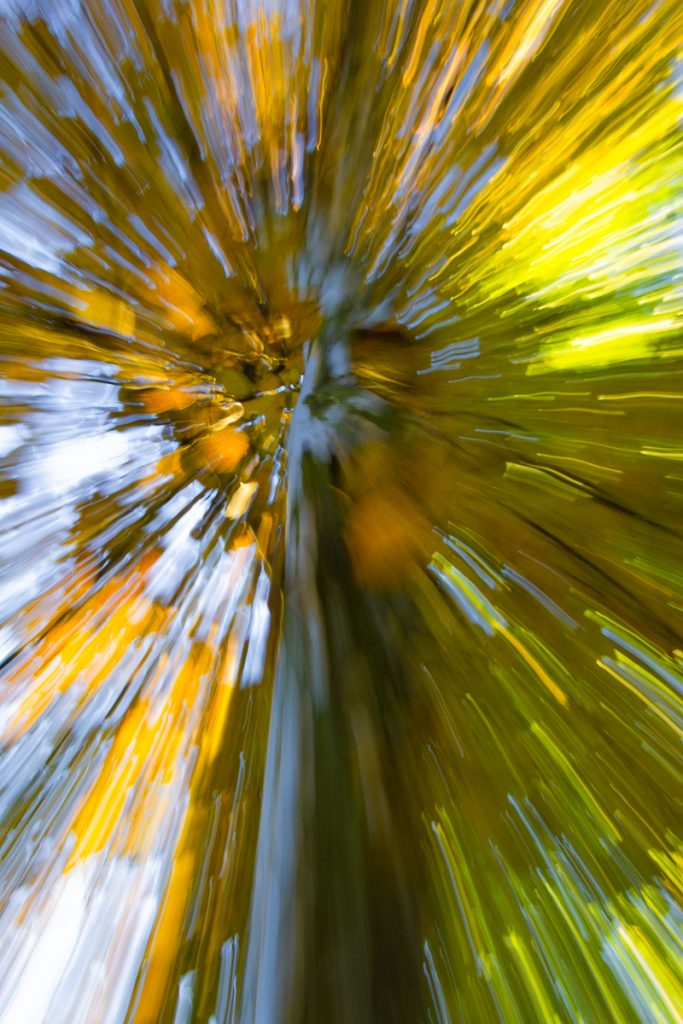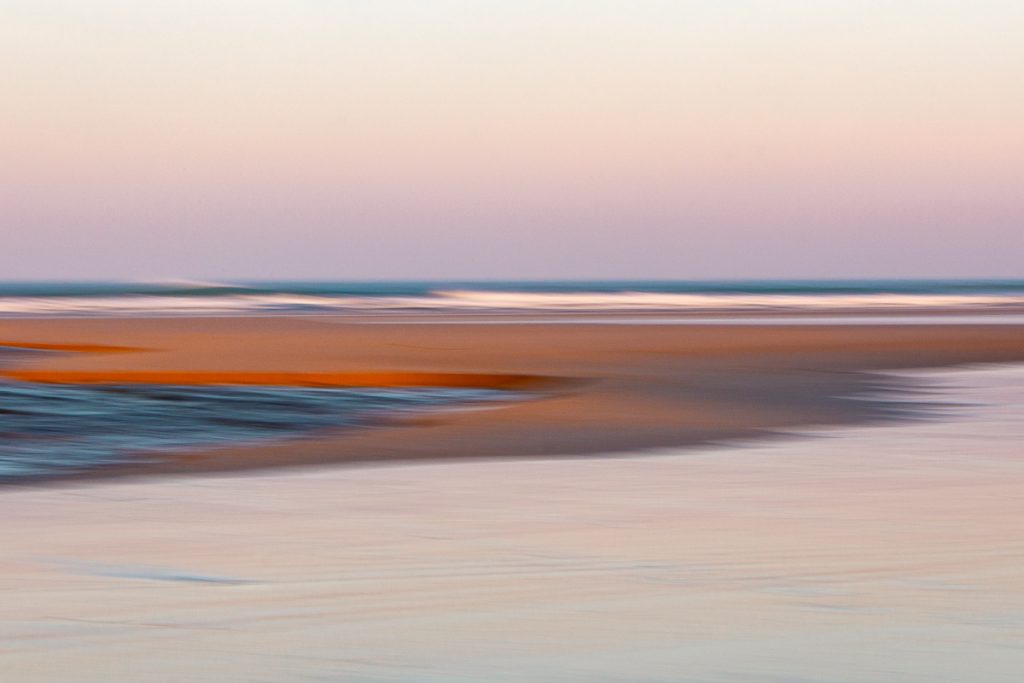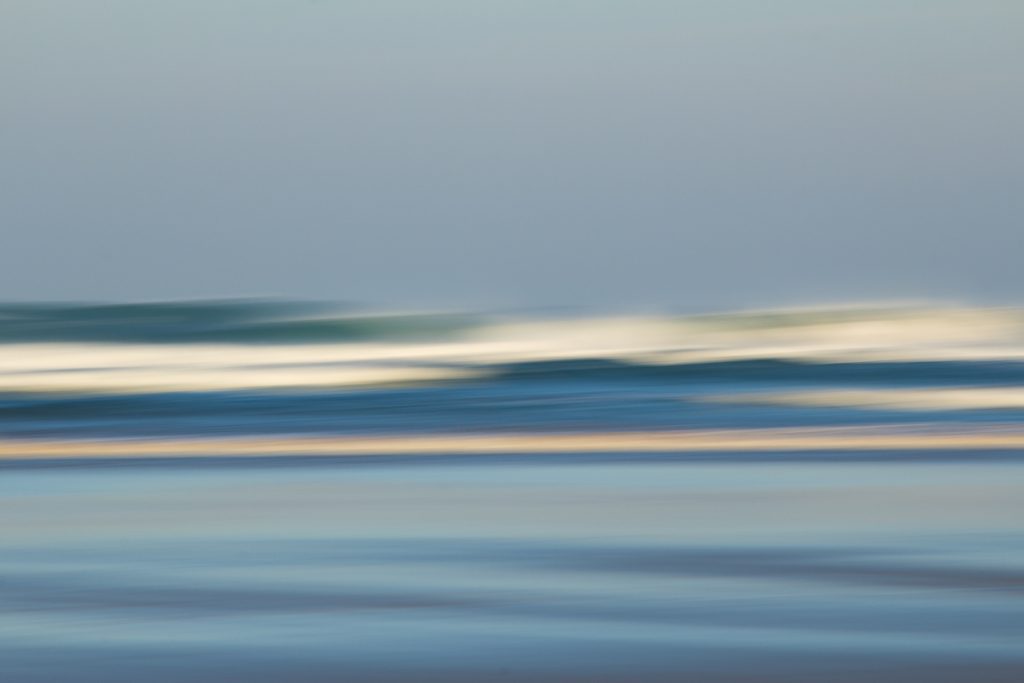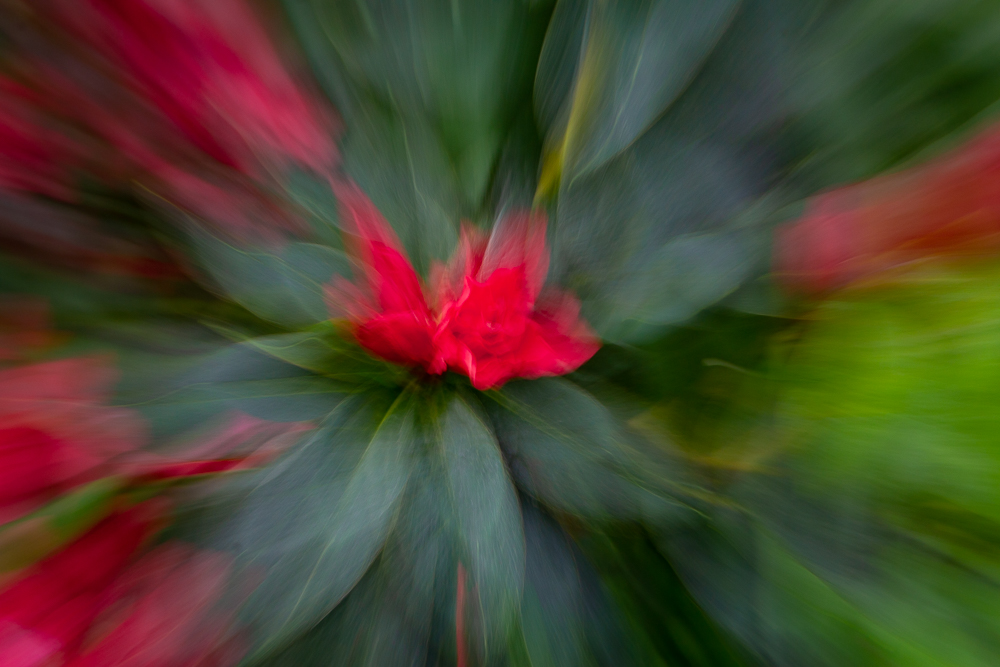The other day I had fun with my camera on the beach and produced abstract photographs. I remembered doing it ages ago. However, when I started serious photography I almost got obsessed with sharpness in my pictures. Starting to move your camera while shooting creates amazing abstract pictures the contrary from sharp. That sets your mind free from the pursuit to get the ultra sharp best composed pictures and is fun. Chance comes into play by allowing yourself to move the camera in any direction you like. Although there are millions of ways you can move your camera in ICM there are two ways I am sure you will enjoy.
Zoom burst

The first ICM technique is called zoom burst or zooming and its rather turning your zoom out or in then moving the whole camera. In my opinion it works best when having a colourful object and surrounding with a predominant colour in the middle like in the picture here or the red leave and the bright red flower in the pictures below.
How much and how fast you turn your lens will determine how your picture will look, but don’t calculate it too much, just play with it and I am sure you will achieve a unique beautiful picture of a particular object each go.
You don’t want the light to be to bright, because you need a longer shutter speed to allow you to turn the lens during exposure. Best times for these kind of experiment are blue and golden hour shortly before and after sunrise and sunset. Greenhouses are equally good, because they take out some sun light but leave enough for you to play with.
Technical Details
Here a few technical settings for those who want to get it right the first time:
- set the ISO to the lowest available on your camera
Most times it will be ISO 100. This reduces the light sensitivity of your camera and allows you longer shutter speeds.
- use slow enough shutter speed to see the turning effect clearly
Before I start, I check with aperture mode (Av on my Canon) set to an aperture of 16 and auto-focussing on a brighter part of my “object” what my shutter speed would look like for optimal exposure. Then I set the camera to manual mode with aperture of 16 and shutter speed of double or 4x of the value the Av mode has shown me. That gives a slightly overexposed picture, but usually not to much. I check for bleached out areas using the histogram, but looking at the picture in your display is sufficient enough. If it is to bright, shorter shutter speed is needed. If it is to dark – great! There is room for a longer shutter speed which allows you slower turning of the lens. In post processing I adjust the brightness to what I feel is right.
- try a neutral density filter if the sun is to bright
A neutral density (ND) filter reduces the incoming light and therefore allows you longer exposure and more time to turn your zoom lens. I really recommend to have at least one ND filter in your gear. For zoom burst try a slight ND filter first. It filters out some sun light, but you are still able to auto-focus. If you have to use a very dark ND filter, you need to auto-focus first. Then set your camera to manual focus before you apply your filter.
I have taken most of my zoom burst pictures with my camera handheld. However, a few times I found it easier to turn the lens while the camera was on a tripod.
ICM – Panning
Turning a zoom lens is just one way of intentional camera movement. Another way is moving your camera parallel to the horizon. It’s often used when you want to create a sense of speed around a moving object and you move the camera with the object so that the background blurs. Here it calls panning. Without the moving objects it proves to be a brilliant play on the beach.

Beach, sea and sky give you an awesome colour spectrum. At the best you have high waves, clouds or slight colour changes at the beach or even better all of the above. Have fun again with ICM playing with shutter speed and pace of movement best at lower light conditions such as mornings and evenings. Pictures in this section were made at Mawgan Porth beach in Cornwall early morning a few weeks ago. Isn’t it incredible how different the pictures are that you can produce in no time from a single spot?

Longer exposure give lighter airier pictures in any ICM technique. Additionally, faster pace gives more blur of colours into each other, almost creating straight lines at some point. As you can see I moved the camera ever so slightly in the first of the panning pictures above where I wanted to capture the shape of the river mouth. Much faster movement is then applied in the next pictures.

Holding the camera straight while moving proved best with me. However, moving it in slight waves or in millions of different ways is worth exploring. I never used a tripod to keep my camera perfectly straight. Handheld was sufficient enough for me. Don’t worry about people standing in your picture. As long as it is the one or another and not a big crowd they just disappear in the blur.
Panning from the cliff
The best on the coast? You don’t even rely on standing at the beach. Last couple of days I was walking on the south coast of Devon which is often a high cliff walk. The bit I was walking was from Babbacombe (pronounced Babbacum) near Torquay to Teignmouth.
Teignmouth is a small seaside town with a pier, a lighthouse, an award winning art gallery (https://www.laurawall.com/) as well as decent food and pleasant B&Bs.

I had clouds over the sea on that walk. The picture on the left is just colours produced by the depth of water and what is underneath the water together with the different colours created by the cloud shadows. To enhance the colours of the water and the blue of the sky by getting rid of reflections you can try a polarising filter.
To many single bigger objects in high contrasting colours to your background might work not so well. But again you have to try it out. As always I am very happy about comments below and shared pictures of your own ICM. If you fancy to purchase a picture, please drop me a line at kate@katefish.eu. I wish you lots of pleasure creating abstract photographs using intentional camera movement while going out and about!
Did you ever try any ICM technique? I am curious about your experiences. Please leave me a comment in the box below.
Kate Fish




Hi Kate
Your photography is inspiring, please keep it up. My first experience with a camera was when I was 4 at a community function about 1950. I picked up my Dad’s box brownie, opened it and inspected the film after removing it. My popularity went down! I live in NZ, retired, and have a huge amount of fun with the camera, mostly nature and outdoors. Camera is a G7x and I carry ND filters in my pocket. Almost never use tripod or flash. Any natural light is good. Self-taught but I did aerial photography and darkroom work as part of my job. I have a comprehensive colour-blind problem which I take as an advantage. I love it when somebody says “I was with you when you took that photo but I never saw that.” ICM is a favourite, sometimes hundreds of shots in a few minutes, most of which get discarded. Have included image… the flower is ‘point camera at flower and move camera around it’.
Anyway, enough of me… you must keep inspiring people!
Hi Wally, thank you very much for your comment and the pictures you share with us.
Kate